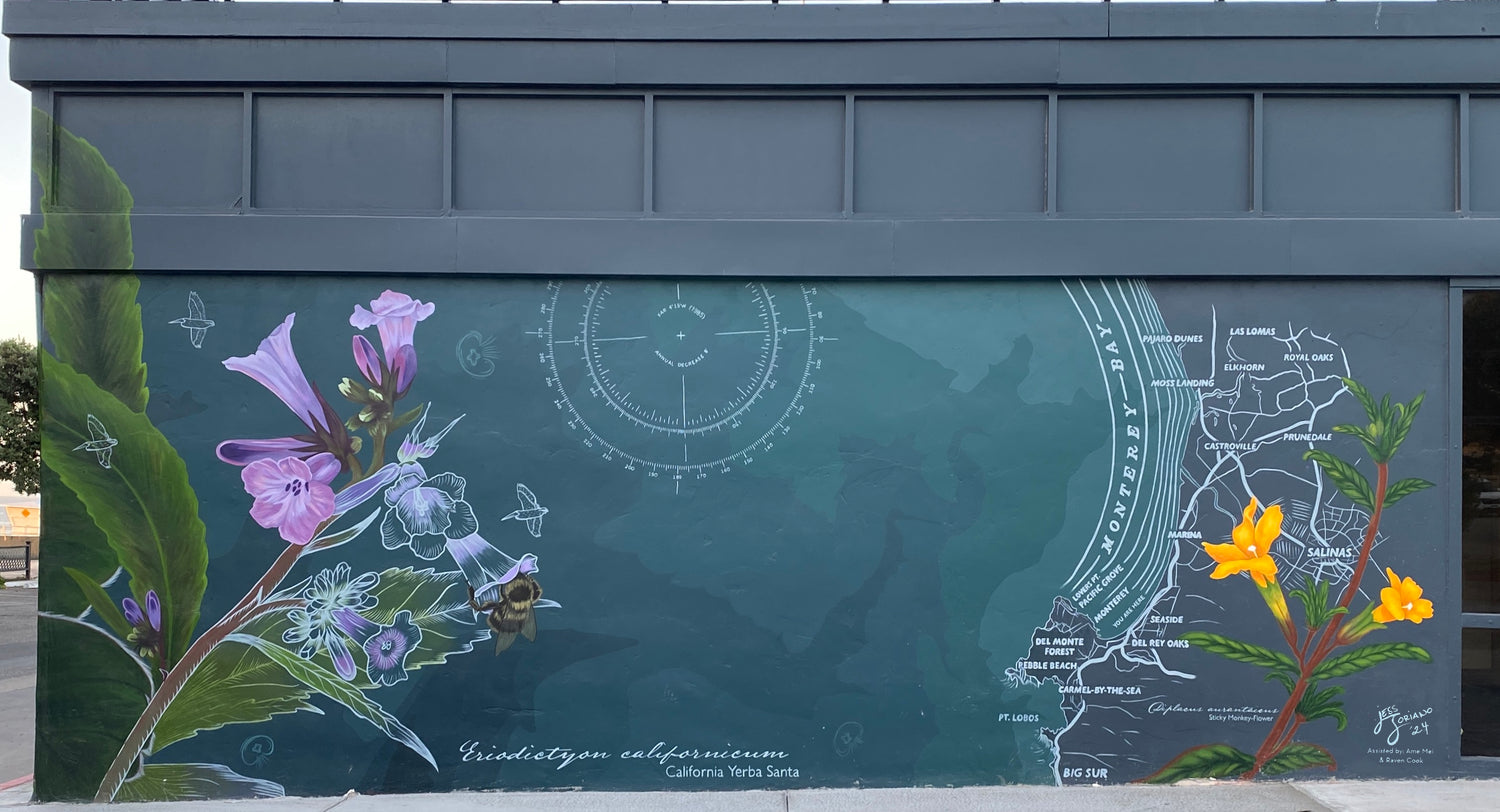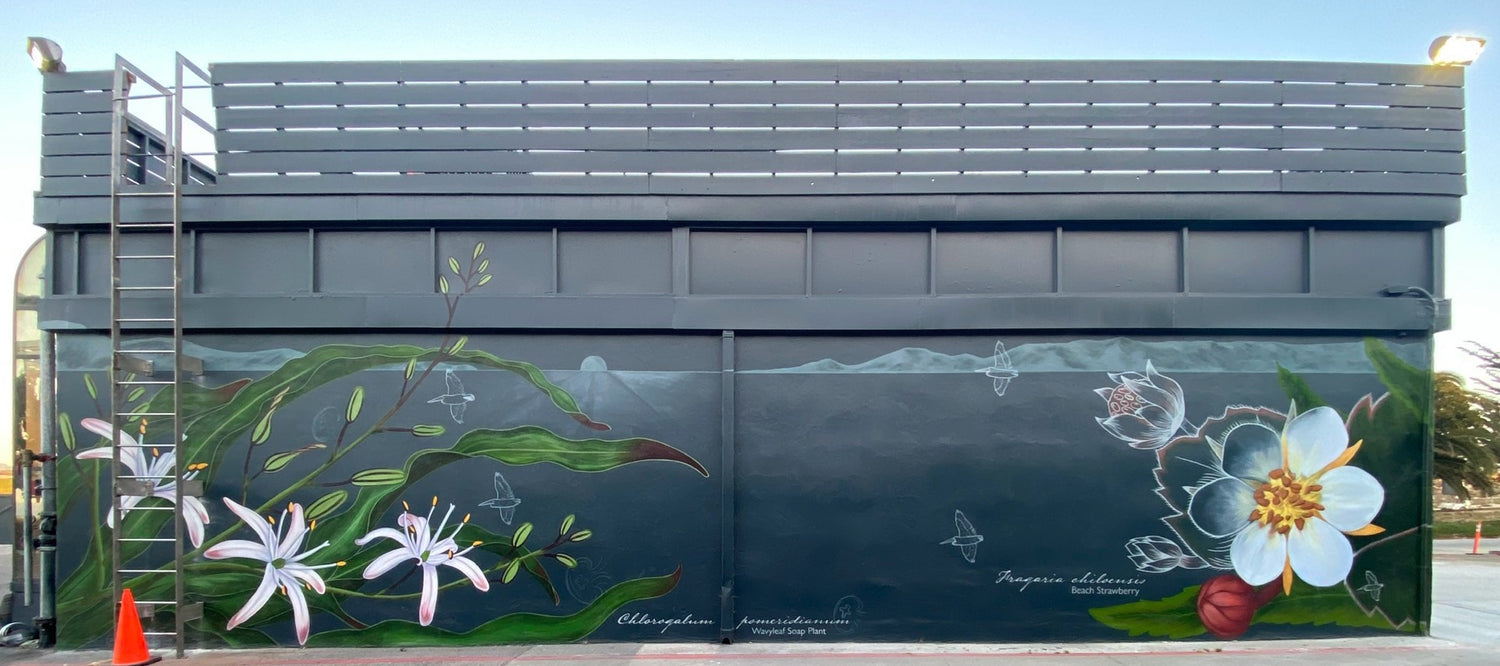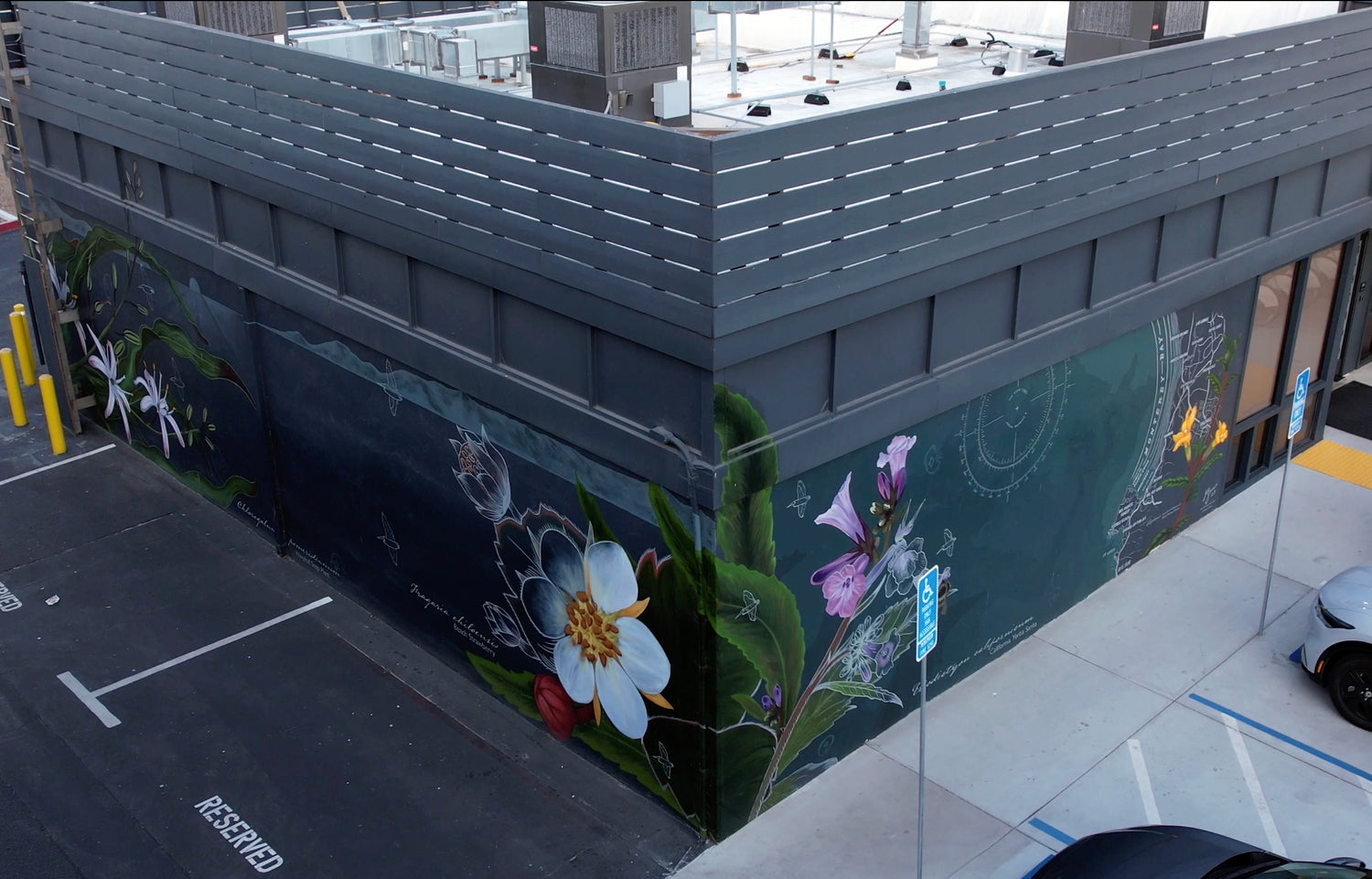Explore Our Wild and Medicinal Earth
Made to be have an educational, curiosity-like quality, I created this piece for the restoration of the Monterey Beach Hotel. Highlighting the importance of our symbiotic relationship with nature, I included sacred, medicinal, and native plants to encourage others to identify them on their hikes, a map of Monterey County to help people understand where they are on Earth, and a topographical map of the Monterey Bay Canyon to express how vast and diverse our bay is.
The combination of crisp linework and detailed color is to show the process of what it's like to travel, field sketch, and connect with the world.
For Monterey Beach Hotel's grand re-opening, I had the honor to paint the walls of their new fitness center. Located right off of the 1, you can see the mural from the highway.
This mural is a dedication to the medicinal, wild, and native plants found along our shores, hills, and rocky in-betweens. I’ve seen almost every plant on a hike. Maybe even some Yerba Santa before it bloomed, but without the flowers, they are a bit easy to overlook. Of course, I had to include a lil symbiotic relationship to connect us 🐝
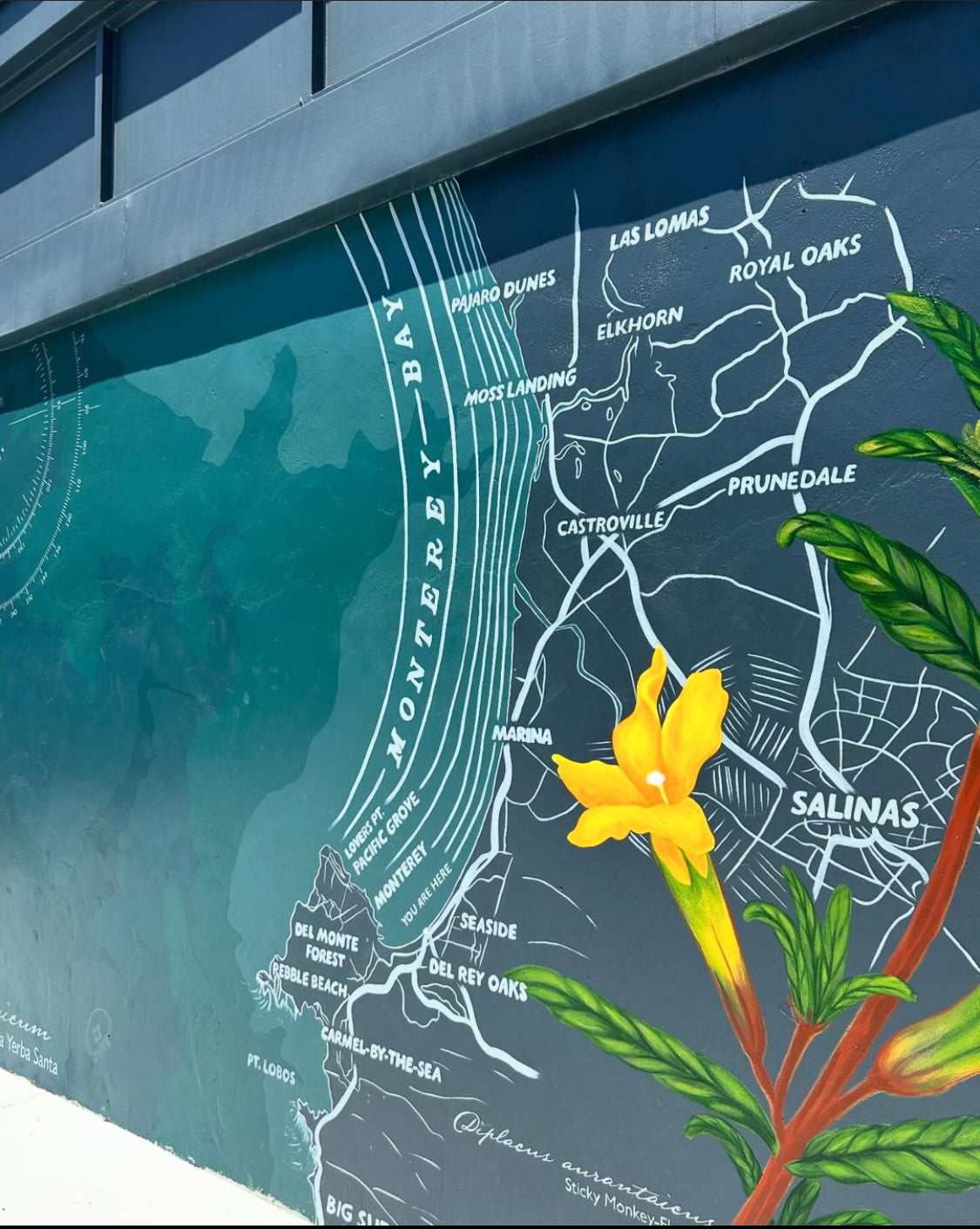
Starting with a partial map of Monterey County, I’ve highlighted the main towns and tourist attractions like Moss Landing, Lovers Point, Point Lobos National Park, and Big Sur. The ocean topographical map extends to the left as a subtle background to show depth, with a rose compass to indicate navigation and exploration.
In the corner of the wall, a Sticky Monkey-Flower, Diplacus aurantaicus, borders the map, giving this side of the wall a pop of color.
Medicinal Properties of Sticky Monkey-Flower
"The Coast Miwok placed the crushed leaves on sores and burns. The roots have been used to treat fever, dysentery, diarrhea, and to curtail hemorrhages. The Pomo have used a decoction made from Sticky Monkey Flower to treat sore, bloodshot eyes which affected many of the men and women who lived in smoky, poorly ventilated dwellings. The flowers commonly have been used to ornament Miwok wreaths and children's hair."
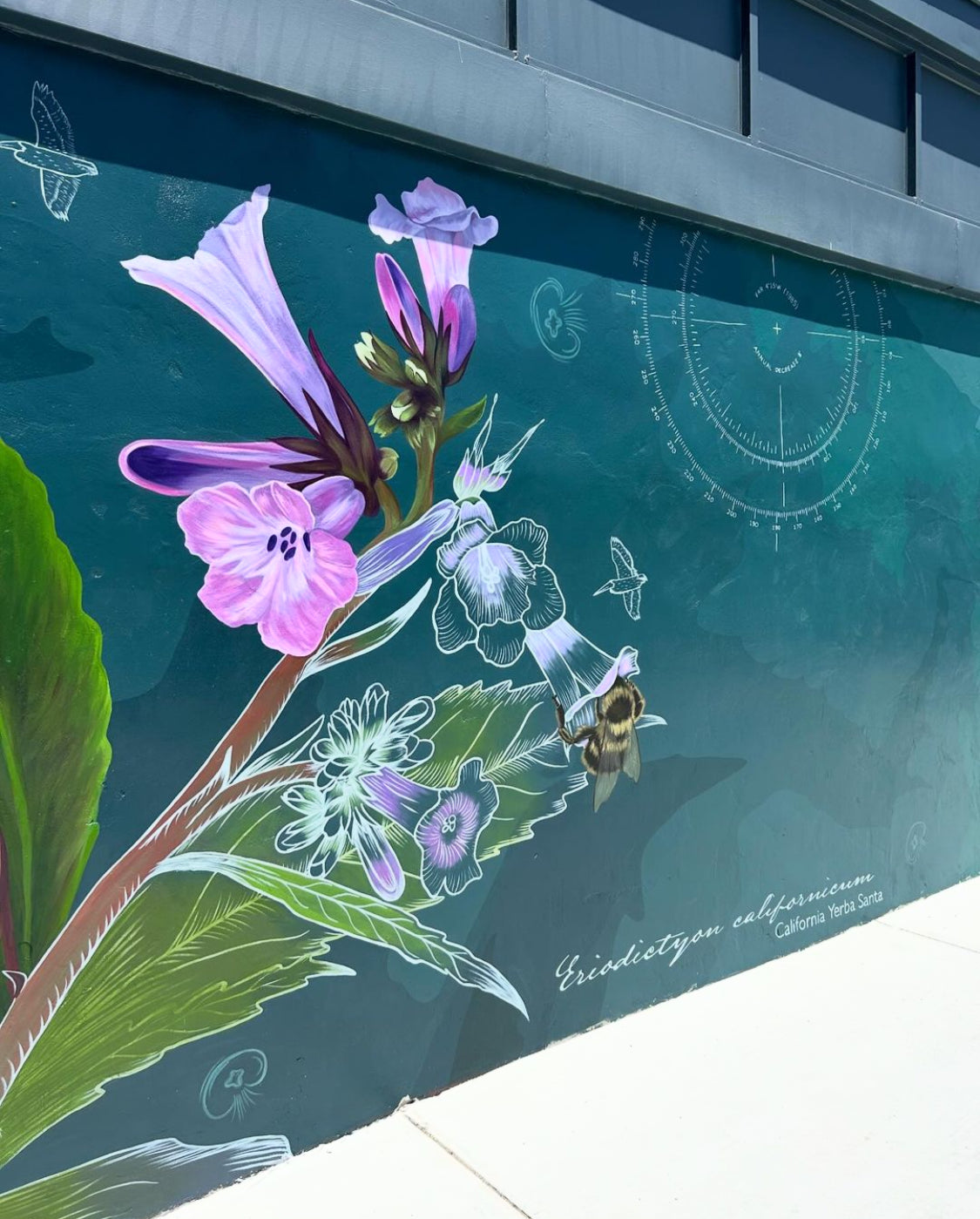
One of my favorite parts of this mural is the underwater topographic map of the Monterey Bay Canyon, where depths can go as deep as 12,000 ft (12,743 ft to be exact)! Can you believe that this canyon is twice the depth of Arizona’s Grand Canyon? It’s the reason why the water is so cold and why the marine animals adore this place so much. As much as life thrives on land, it thrives even greater in our waters.
Over the underwater topographic map, there is a sketch and rendered Yerba Santa, Eriodictyon californicum, with a Suckley's cuckoo bumblebee, Bombus suckleyi, curious for more pollen.
Medicinal Properties of Yerba Santa
"Many California tribes including the Salinan, Ohlone, Miwok, Pomo, and Yokuts consider Yerba Santa a holy plant, and many continue to use it for various medicinal purposes. Infusions of Yerba santa leaves and flowers were used to treat fevers, coughs, colds, stomachaches asthma, rheumatism pleurisy, and to purify the blood.
Leaves were smoked or chewed to relieve asthma, coughs, colds, headaches, and stomachaches. Heated leaves were placed on the forehead to relieve headaches and other aches and sores The sticky leaves conveniently stay in place upon the skin. Mashed leaves were applied externally to sores, cuts, wounds, and aching muscles. Mashed leaves were also used to reduce the swelling and relieve pain caused by bone fractures. Yerba Santa, used alone or combined with other herbs, was applied to infected sores on humans and animals. The branches and leaves were burned in steam baths to treat rheumatism."
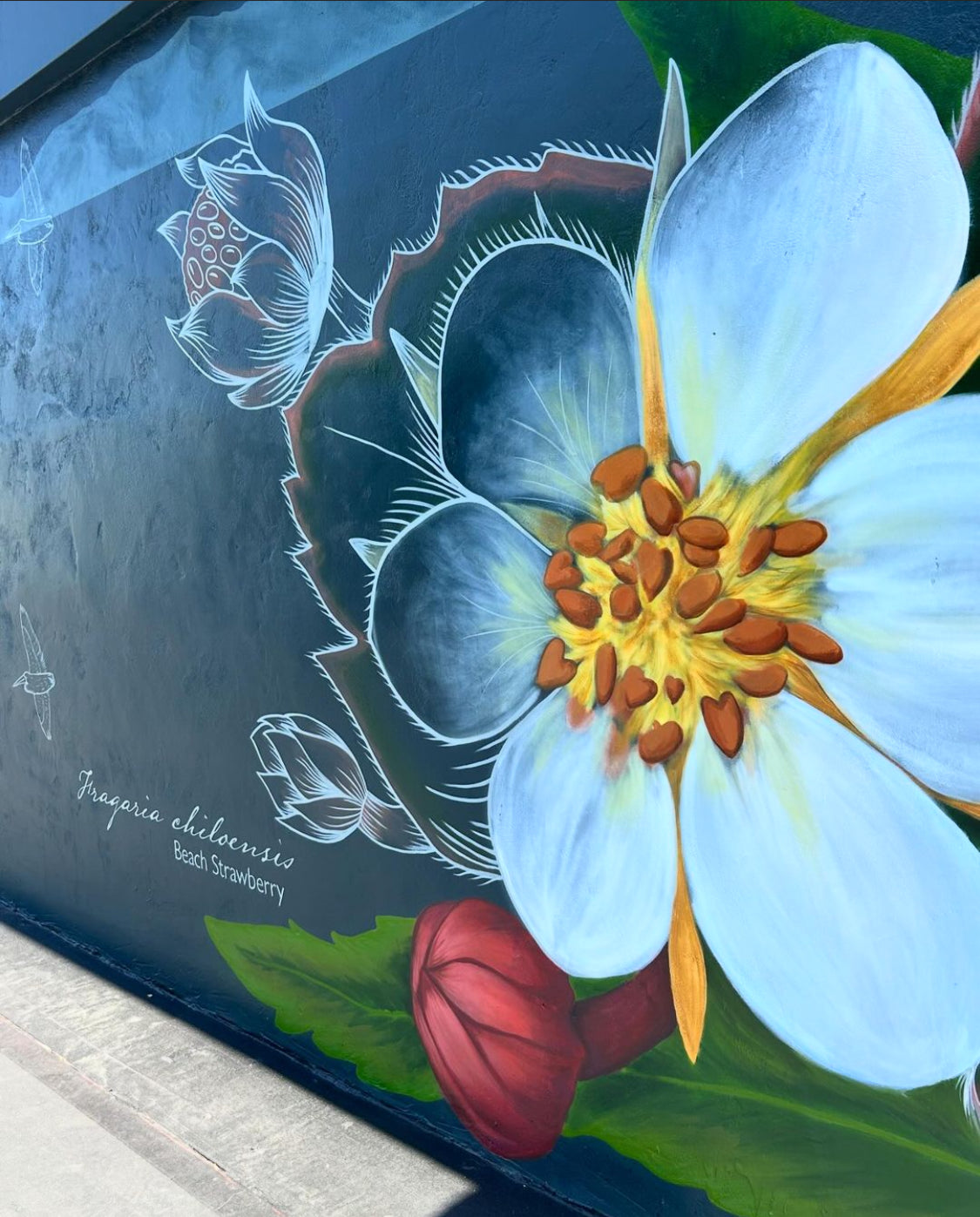
Like Beach Strawberry, Fragaria chiloensis, I’ve found each one on hikes nearby, so this mural encourages the viewer to explore their surroundings so they could find these flowers themselves :)
The horizon background is the view from Seaside/Monterey, with both the Pacific
Grove and Santa Cruz coasts visible.
Medicinal Properties of Beach Strawberry
"The Wiyot, Pomo, and other tribes in California savored the fruits. The plant is also used medicinally by the Quileute by chewing the leaves and spitting them on
burns."
"Among berries, the strawberry is a rich source of several nutritive and non-nutritive bioactive compounds, which are implicated in various health-promoting and disease preventive effects. A plethora of studies have examined the benefits of strawberry consumption, such as prevention of nflammation disorders and oxidative stress, reduction of obesity related disorders and heart disease risk, and protection against various types of cancer."
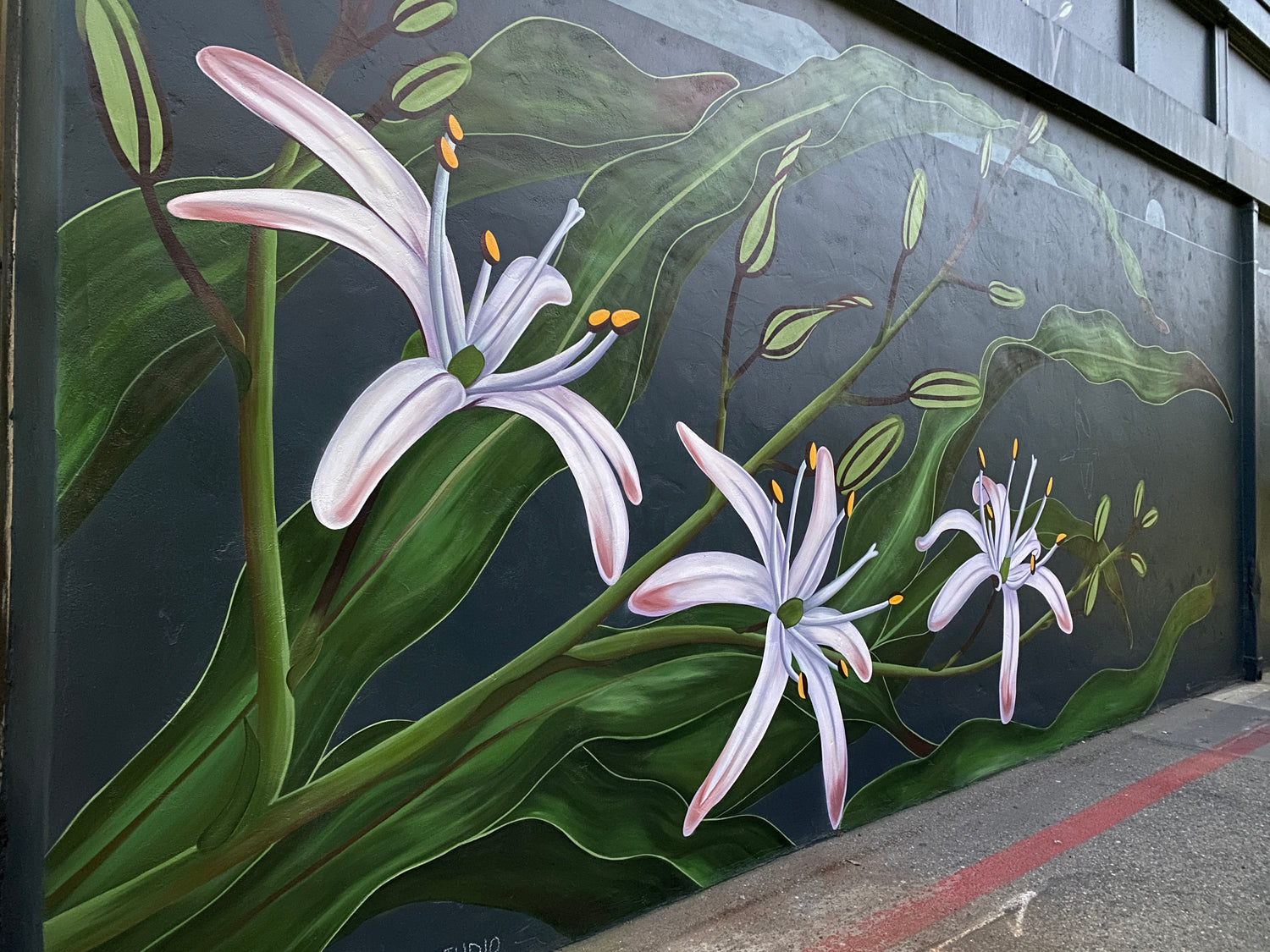
Last but definitely not least, a fully rendered Wavy-leafed Soap Plant, Chlorogalum pomeridianum, stretches past the horizon line and reaches for the sun.
I’ve chosen these plants because they are considered sacred and native to the area. They are not toxic and can be bitter if not prepared properly. This mural sheds light on the importance of our symbiotic relationship with nature.
Medicinal Properties of Wavy-leafed Soap Plant
"Amole is a generic Spanish term for a plant-derived soap; other plants of the Southwest have this name. Sources say that it makes
excellent laundry soap for delicate fabrics, good shampoo, dish detergent, and bath soap. The brown fibre that is stripped off the bulb is made into little brushes. The boiled bulb makes a kind of glue. This is truly a plant of great utility.
Besides the above listed uses, the local Native Americans also used the bulb for food. The soapy root contains toxins that stupefy fish, causing them to float to the surface of the stream or pond where the root is applied; this technique, however, is in modern times not legal. The bulb itself is also eaten; it is cooked in an old-style earthen oven for a good period (overnight, for instance), and becomes sweet and good for food. Like so many of the other plants known to the California natives, this plant was used also for medicinal purposes.
Be careful using this plant if you are not familiar with it. Eating the bulb raw is bad, for the same chemicals that make it a good soap and fish poison (saponins) are present in the raw bulb."
Finally, moon jellies, Aurelia aurita, and pelicans, Pelecanus occidentalis, are loosely painted to connect the deep sea world with the land dwelling flowers. These soft sketches allow the viewer to see the connection between observation, creation, and appreciation.
When we take the time to watch nature, we can observe the beauty around us. By observing we have a change to feel emotions towards another living thing. As these emotions come up, we can start developing an appreciation for the world around us. This appreciation can turn into motivation, and when we are motivated, we can do whatever we set our minds to.
Being able to share my love for exploration, healing, nature, and connection through art is one of the greatest gifts ever. This project wouldn’t have been possible without the help from David Snell, Alex Halpern, Beatrice Girelli, Amy Kohler, and Raven Cook, as well as the crews from HighGate and HardyGroup for making me feel safe and supported. Also special thanks to my family and friends for being there for me through every step of this journey. It was a long adventure, and I’m forever grateful for your support and encouragement. Thank you to everyone involved with making Monterey Beach Hotel what it is today, for trusting my vision and giving me the creative freedom to explore. You shined a light on the side of me I’ve always wanted to share.

